In what one might call the rite of passage before the rite of passage that is college, each fall thousands of parents take their high school–age kids across America to tour university campuses. Here, five writers tell the stories of their visits—and how their children made the big decision of where to begin their adult lives.
It Had Her Name on
It A month or so into my freshman year of college at the University of Southern California, a friend convinced me to road trip from Los Angeles to the Bay Area for a football game at the University of California, Berkeley. On that trip north I met a Cal student who would become my husband—and in the process kicked off a (mostly) friendly intra-family rivalry.
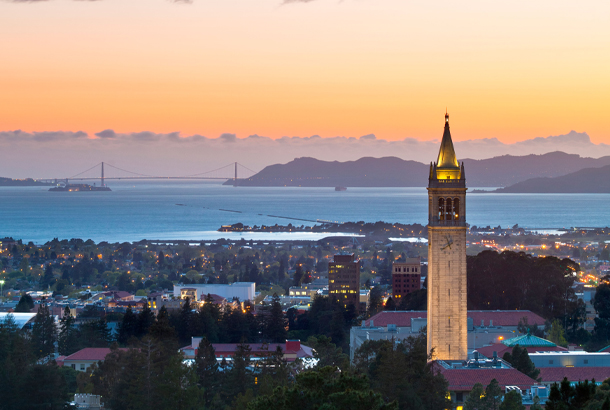
Fast-forward through decades of football Saturdays (mostly ending in USC victories), and the time arrived for our oldest daughter to choose a college. With a delicate family balance at stake—and our daughter gravitating toward leaving California for the East Coast anyway—my husband and I agreed to try to keep our opinions to ourselves.
The campus tours took priority, but we made a point to have fun—sometimes more than I expected. While waiting for a tour to begin at Swarthmore College, my daughter looked around and whispered, “I feel like I’m in a Harry Potter movie.” That environment may have appealed to some kids, but I could see she didn’t mean it as a compliment.
We slipped away and headed into downtown Philadelphia, where instead of focusing on the future we appreciated the past, wandering Independence Mall, studying the crack in the Liberty Bell, and snacking on Tastykake Butterscotch Krimpets.
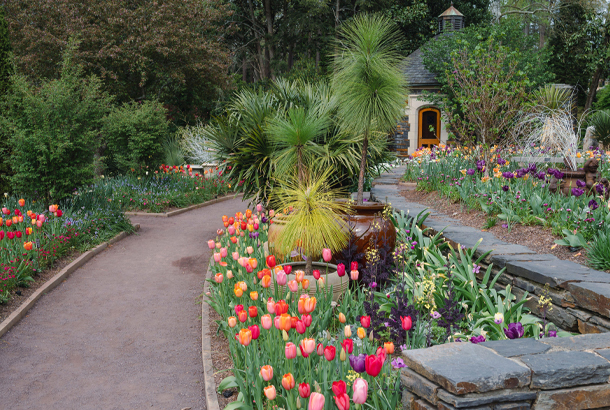
On another trip, after a five-hour flight across the country to North Carolina, it took all of five minutes for the competing hues of blue at Duke University and UNC Chapel Hill to sweep my daughter off her feet. We were charmed by the campuses, the Sarah P. Duke Gardens, Chapel Hill’s bustling Franklin Street, the Southern hospitality, and, most of all, the biscuits and gravy.
When acceptances began rolling in, however, her mindset shifted, as she seemed pleasantly surprised by a few West Coast options. At her request, we took one final trip to a campus just an hour’s drive from our home, where a different shade of collegiate blue convinced her that “California girl” had a nice ring to it.
I should have seen it coming—after all, my daughter’s name is Berklee. We spelled it differently than her father’s alma mater, but it’s pronounced the same, and the heckling I endured from friends and family peaked when she enrolled at UC Berkeley. If that’s not enough, she loved her time at Cal so much that a couple of years later her younger sister went there too.
So, I lost the battle of the alma maters. I may be outnumbered now, but at least having the kids close to home is a win. And, there’s always grad school.
—Dana Rebmann
Shopping for the Future
At the tender age of 17, my son beheld the bleakest of winter days on the tundra that is Iowa in January—and saw his future. Not the snow drifts and frost creeping across the car windshield, but the shimmering image of himself on a leafy campus with a diverse student body, a science lab named for the alum who created the microchip, and opportunities for small classes and individual projects.
Developing such a three-dimensional forecast took two years of research. As a family, we took the approach that we were shopping for a future—Seth’s future—which is a very big buy. First, there was homework: reading the venerable Fiske Guide to Colleges to find a few that appealed. Then, seizing an unsung travel opportunity, we embarked on campus visits.
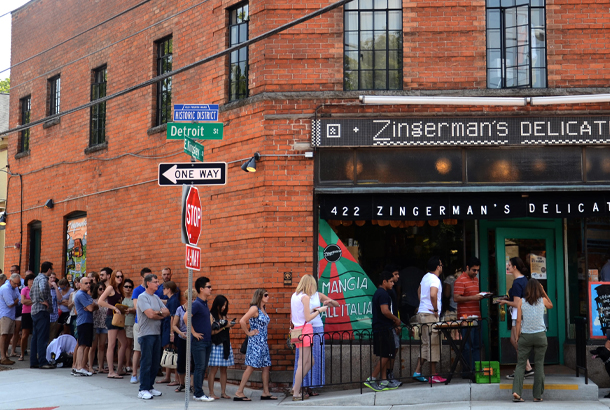
Travel can often be transformative, and in this case it was intentionally so, as we were preparing Seth for an independent life. We appended 20-something campus visits to two years’ worth of family vacations and weddings, and each time we asked him to imagine living like a local in that community. It wasn’t all about the extracurriculars—we thrilled at the science program at Amherst College and the quarter system at Northwestern University—but we broke up the bonanza of campuses in Boston by going to a Red Sox game at Fenway Park, and ate the best Reuben sandwich of our lives at the legendary Zingerman’s Delicatessen in Ann Arbor while seeing the University of Michigan. We discovered that college towns are great for getting off the beaten tourist path (Bowdoin College got us to the beaches of MidCoast Maine) and enjoying idiosyncrasies (the University of Wisconsin, Madison, has a thing for pink flamingos), while simultaneously wrestling with the big questions: Who am I? What do I want?
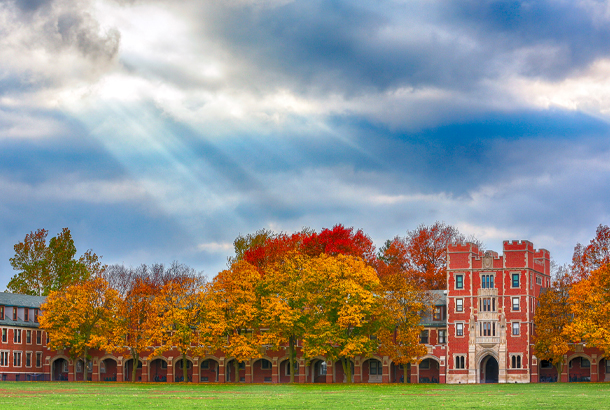
It takes time to find the answers, to map a place and imagine yourself in it. In that sense, it’s not surprising that Seth picked the last school we visited, Grinnell College, for its individualized academics and policy of student self-governance, its diverse population, and its quirky streak (no frats or sororities but plenty of Nerf-gun games). Still, we cherished each stop along the way, and the opportunity to see family and friends from Portland, Maine, to Portland, Oregon. The experience bonded us—ironically, just before he would fledge.
—Elaine Glusac
The Ultimate Decision
During my daughter’s junior year of high school, we toured nine colleges across two separate expeditions. Trip one arced from our Brooklyn home up through the Hudson Valley, Western Massachusetts, and Rhode Island, to see Vassar, Amherst, Smith, and Hampshire Colleges, plus UMass Amherst and Brown University. Our second trip was to the piney Maine schools Bates, Bowdoin, and Colby. Astrid was an intellectual teenager, a foodie who skewed artistic (she took painting lessons at the Brooklyn Museum), who was social but had no interest in Greek scenes or NCAA sports (although she did enjoy playing the flying disc game Ultimate).
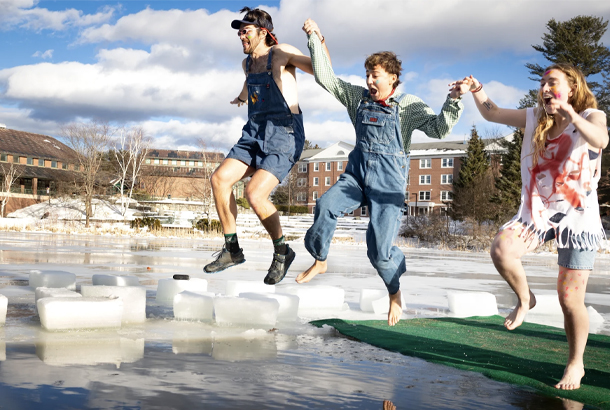
The campus tours followed a similar rubric: fast-paced, led by an articulate student majoring in something cooler than accounting. Vassar stood out as a bastion of elegance; it was easy to envision Mary McCarthy taking notes for The Group in the pitched-ceilinged, wooden-seated lecture hall.
Astrid also liked the big, historic feeling of Brown, which had held classes 12 years before the Declaration of Independence and had a vibe that reminded her of Model United Nations conferences she had attended. We got a tad worn out by all the bragging about the computer science department, though, so we peeled off to nearby Den Den for bibimbap. (The tanginess of the food implanted more happy brain bytes than any dreams of robotics.)
In Maine, we anchored in Portland, a cobblestoned city with Federal-style brick buildings along Casco Bay. Our breakfast at The Holy Donut— potato-based, hand-rolled, blueberry-glazed—had us genuflecting to the bakers. What about the schools, you ask? Astrid was drawn to Bates. She enjoyed the stories of the winter Puddle Jump tradition, in which exuberant students clad in swimsuits, pajamas, or tutus dive into a frozen campus pond. (She’s a Coney Island Polar Bear plunge alumna). She was also wowed by the sprawling dining commons, with its 32-canister, Pez-like wall dispensing sugar in cereal form: Trix, Fruity Pebbles, you name it.
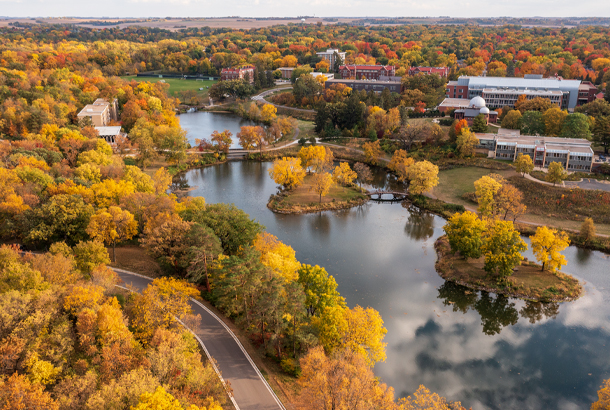
Astrid applied to 10 schools in all, and got into five. Her finalists were Bates and Carleton College, a liberal arts school in Northfield, Minnesota, that she had yet to visit but that appealed to her because a majority of its students study abroad and because the prairie landscape offered “the chance to experience something new.” She flew solo to Minneapolis to check out the campus, her 6 a.m. LaGuardia departure a first step toward independence.
In the end, she chose Carleton, in part because it offered the best financial-aid package—although I suspect that having a dominant Ultimate team didn’t hurt.
—Jill Benz Malter
A Change of Heart
Going to high school in the Bay Area, my son, John, flew mostly under the radar. He did his homework and got good grades but steered clear of his teachers. He excelled at sports— soccer, golf, skiing, swimming—but refused his coaches’ pleas to focus on just one.
While my husband and I wanted John to stay in-state for college, he liked the idea of the East Coast. He planned to apply to several colleges back there, along with a few California backups. We decided we wouldn’t tour any out-of-state schools until we knew where he was accepted. Then, he aced his ACT, and the top colleges started recruiting him. Suddenly, there were possibilities we hadn’t considered, so we hopped on a plane for New England.
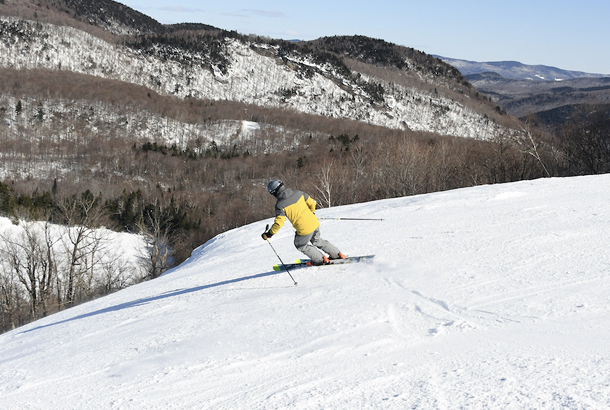
I thought John had found his dream school in Vermont, when Middlebury College’s golf coach told him he could walk onto the team if he was admitted. (Plus, the school had its own ski hill!) After the ACT result, though, John was more focused on academics than sports.
As we drove through New England, the smaller, often rural colleges—Bates and Colby, Hamilton, even Bowdoin—failed to impress our Bay Area boy. The trip was fun: We swam in the Atlantic, ate lobster, and kept running into the same touring families on the campuses and at the motels. We talked about the pros and cons of the schools, while listening to Twenty One Pilots on a portable speaker. When we hit the bigger, tougher-to-get-into schools (Dartmouth, Harvard), John got excited; it seemed that was the way he would go.
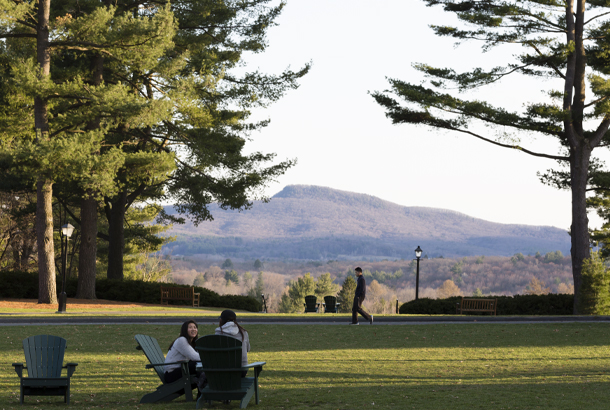
Back home, we waited for acceptances, but the Ivies fell like lead balloons. Even more disappointing was when he didn’t get into Amherst, where his grandfather had gone before enlisting in the army for World War II. The tradition had called to John in a deep way. Still, he was offered admission to Bates and Hamilton, so he had options.
Then, just two weeks before decision day, he asked to see his backup schools in California.
Now? California? Really?
John, it turned out, had started dating a beautiful girl, Mea, at the end of March, and the Little Ivies didn’t quite have the pull to lure him away from California. So, we road-tripped down the coast to see UC Santa Barbara and UC San Diego. This time, the deciding factor was obvious: All the students we talked to were happy and relaxed, especially in Santa Barbara. John’s one concern was SB’s reputation as a party school. I told him college is what you make of it; after all, we saw lots of kids studying at UCSB, and at Hamilton we had seen an unfortunate tour guide open a door to a dorm patio littered with empty vodka bottles and red Solo cups.
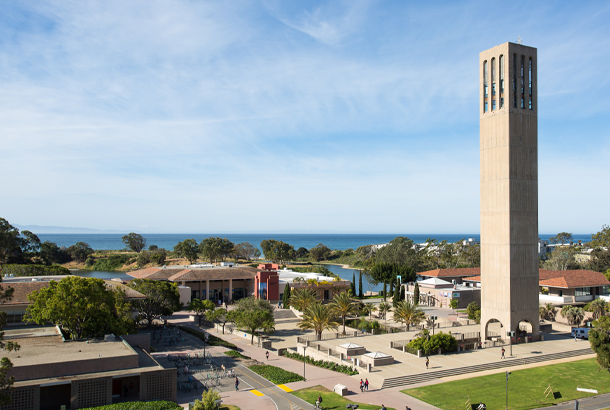
In the end, John decided on UCSB, where he majored in chemical engineering, made great friends, and maintained a not-too-long-distance relationship with his high-school sweetheart. Today, he’s pursuing a PhD at UC Berkeley, and in May he married Mea, surrounded by his UCSB-grad groomsmen—all of them relaxed and happy.
—Susan Dowdney Safipour
First Time for Everyone
As teenagers approaching high school graduation in New York, neither my wife, Debbie, nor I visited colleges with our parents. We didn’t know what we wanted, and we applied to the State University of New York at Albany because it was a place our friends had applied to. It worked out for us—we met at SUNYA—but I wouldn’t call Albany idyllic; outside of Debbie, my memories are of concrete, bars, wind, and chicken wings.
When our son Myles reached that age, he wanted to visit a few colleges, and he asked us to join him. It was a first-time experience for everyone. Myles knew he didn’t want to go to a school too far away from our home in Chicago, so we mostly went to check out campuses in-state. At first, we merely saw this as something parents do for their kids, but we soon realized these visits were family trips in disguise.
Of course, they weren’t all great trips. Our first was to Northern Illinois University, where … there was a lot of construction. It was a gray and dreary day, and we didn’t see any students walking around. Minutes into the visit, Myles turned to me and asked, “Can we go?” We didn’t even have lunch before driving home. Considering it was the first campus visit for all of us, we couldn’t help but wonder, would they all be like this?
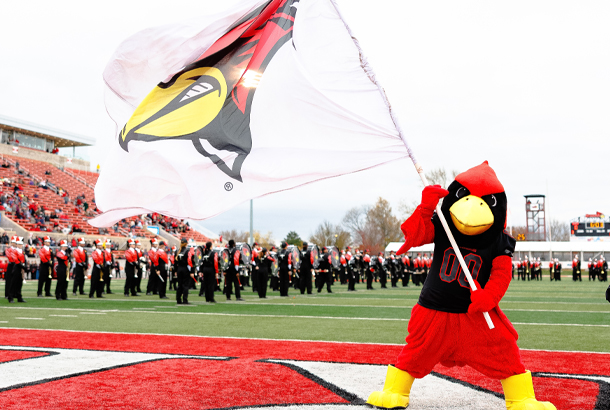
Fortunately not. Next up was Illinois State University. It wasn’t a huge school, but there were students everywhere, sunny skies, and a grassy quad at the center of the campus. The city, Normal, was small but had a nice college town vibe, with record stores and vintage clothing shops. The University of Illinois Urbana-Champaign, meanwhile, pulsed with the energy of 50,000-plus students and offered seemingly endless green space. The downtown was reminiscent of Normal’s, except there were two downtowns, with more shops, more restaurants. Myles realized that, while he wanted to be close to home, he also yearned for something big, something that felt part of the wider world. U of I offered the perfect combination.
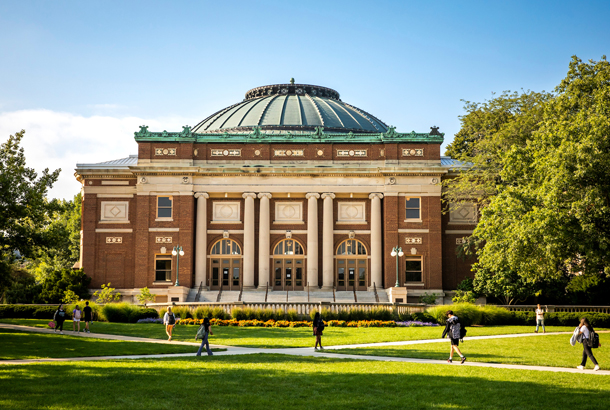
The trips with Myles—who is now a senior at U of I—gave Debbie and me a chance to reminisce about our own college experience, both for good and bad. We wished we could go back to school, to do it better, with purpose. But also, we appreciated that we had met at SUNYA, built a life together. Visiting campuses with Myles, we got to see the path he would be on as he built his life. Now, his younger brother, Noah, is preparing to look at colleges. He has mentioned the University of San Francisco and Portland State University, and we look forward to visiting both. We’ll travel further, and see what else there is to learn.
—Ben Tanzer




